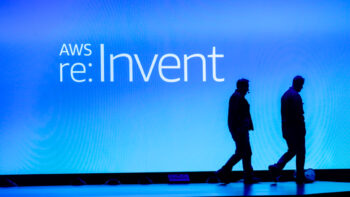In the technology industry, productivity is sacrosanct. Speed, responsiveness and efficiency are the currencies used to pay for success. The problem is that many IT teams today are operating at breakneck speed, and professional burnout is becoming a costly side-effect of this pace. Is it possible to build a team that not only delivers projects, but doesn’t burn out in the process after a year?
More and more technology companies are testing the answer to this question. They are abandoning endless sprints, shortening work weeks, introducing ‘no-meeting Fridays’ and starting to treat mental health as a viable performance indicator. This is not a fad, but a reaction to systemic overload.
Chronic overload as the new normal
Working in IT today is not just about programming, but also about constantly switching between tasks, synchronising with teams spread across time zones and living in a constant state of readiness. Added to this is the pressure of results – there is no room for a “moment of weakness” in software houses, DevOps departments or cyber security teams.
Professional burnout is no longer an isolated case – rather, it is the result of a structural maladjustment of companies to the challenges of modern work. Leaders who ignore this signal pay the price: increasing turnover, decreased motivation and increased project errors.
Instead of more – different. Leaders change the starting point
Conscious technology leaders are no longer asking: “how do we increase productivity?”, but rather “what is limiting us – and how do we remove it?”. The first step is usually diagnosis – analysing work rhythms, team calendars, meeting frequency, overtime or sprint backlogs. Often, what appears to be an efficient organisation turns out to be a hidden source of stress.
It’s not about spectacular changes, but thoughtful adjustments. Shortening sprints, loosening the pace of releases, planning holidays better – these are details that make a difference in the long run.
Small practices, big effect
A number of common solutions are emerging among companies that effectively counteract burnout:
- The 4-day week tested by some software houses has been shown not to reduce productivity but to improve morale.
- “No-meeting Fridays” allow teams to work deeply, without breaking their concentration with further video conferences.
- Time blocks in the calendar – protected from meetings hours to focus, be creative or simply breathe.
- Balanced pace of releases – SaaS companies that have slowed down their release cycles have seen fewer bugs and lower stress levels for development teams.
- Rotation of tasks and zones without deadlines – so that not every day is a sprint to the goal.
These solutions are not costly – they mainly require a change in thinking about work as a long-distance process, not a race.
Communication: not soft skill, but core competence
No process will work without good communication. Pressure-resistant teams are those in which leaders are able to pick up on signs of overload before burnout sets in. This is helped by informal check-ins, feedback not only on tasks but also on moods, and openness to different communication styles within the team.
Not everyone wants to talk about fatigue in a group. Sometimes a space for individual conversation is enough. It’s also worth remembering that emotions in an IT team are just as important as technical competence – ignoring them is a simple path to turnover and burnout.
Leader as a shock absorber, not an accelerator
In the traditional management model, the manager was expected to ‘push’ the team forward. Today, an effective technology leader is more likely to ‘cushion’ the pressure coming from the top rather than amplify it. He or she is the one who sets the rules for after-hours communication, sets the example by taking leave, protects the team’s time and speaks out when a project is poorly planned.
In companies that perform well without the cost of burnout, leaders do not glorify overtime. On the contrary, they regard it as a wake-up call.
How do you measure what you can’t see?
More and more IT companies are trying to combine classic performance indicators (e.g. velocity, delivery time) with soft data: retention, team sentiment, number of reported holidays or errors due to fatigue.
There are even new KPIs emerging – for example, a composite score combining team satisfaction, response time in projects and overtime. This signals that companies are starting to see employee wellbeing as a competitive element, not a cost.
A pressure-resistant team is an advantage, not a luxury
Companies that invest in healthy working rhythms not only manage turnover better. They also often achieve higher code quality, greater project stability and stronger team engagement. These are not ‘soft’ effects – they are hard data.
Productivity without burnout is not a utopia. However, it requires a decision: to stop, look at the reality and redesign the work. Where leaders dare to do this, the team repays the favor with efficiency that does not end in the third quarter.












